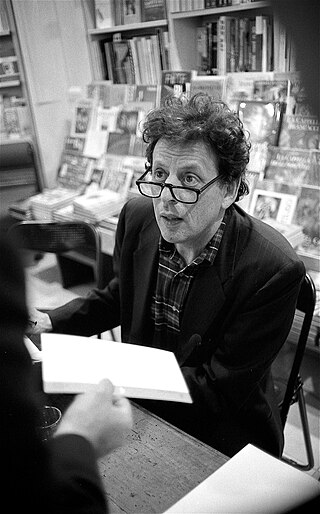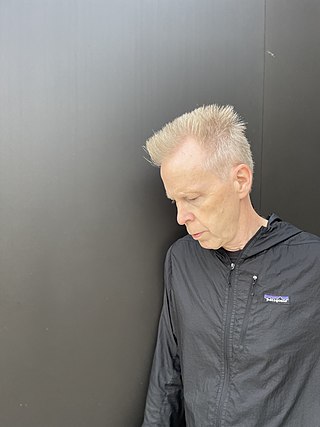
Philip Glass is an American composer and pianist. He is widely regarded as one of the most influential composers of the late 20th century. Glass's work has been associated with minimalism, being built up from repetitive phrases and shifting layers. Glass describes himself as a composer of "music with repetitive structures", which he has helped to evolve stylistically.

The Pulitzer Prize for Music is one of seven Pulitzer Prizes awarded annually in Letters, Drama, and Music. It was first given in 1943. Joseph Pulitzer arranged for a music scholarship to be awarded each year, and this was eventually converted into a prize: "For a distinguished musical composition of significant dimension by an American that has had its first performance in the United States during the year."

William Grant Still Jr. was an American composer of nearly two hundred works, including five symphonies, four ballets, nine operas, over thirty choral works, art songs, chamber music, and solo works. Born in Mississippi and growing up in Little Rock, Arkansas, Still attended Wilberforce University and Oberlin Conservatory of Music as a student of George Whitefield Chadwick and then Edgard Varèse. Because of his close association and collaboration with prominent African-American literary and cultural figures, Still is considered to be part of the Harlem Renaissance.
The Symphony No. 11 in G minor, Op. 103, by Dmitri Shostakovich was written in 1957 and premiered by the USSR Symphony Orchestra under Natan Rakhlin on 30 October 1957. The subtitle of the symphony refers to the events of the Russian Revolution of 1905, which the symphony depicts. The first performance given outside the Soviet Union took place in London's Royal Festival Hall on 22 January 1958 when Sir Malcolm Sargent conducted the BBC Symphony Orchestra. The United States premiere was performed by Leopold Stokowski conducting the Houston Symphony on 7 April 1958. The symphony was conceived as a popular piece and proved an instant success in Russia, his greatest one since the Leningrad Symphony fifteen years earlier. The work's popular success, as well as its earning him a Lenin Prize in April 1958, marked the composer's formal rehabilitation from the Zhdanov Doctrine of 1948.

The Symphony No. 15 in A major, Op. 141, composed between late 1970 and July 29, 1971, is the final symphony by Dmitri Shostakovich. It was his first purely instrumental and non-programmatic symphony since the Tenth from 1953. Shostakovich began to plan and sketch the Fifteenth in late 1970, with the intention of composing for himself a cheerful work to mark his 65th birthday the next year. After completing the sketch score in April 1971, he wrote the orchestral score in June while receiving medical treatment in the town of Kurgan. The symphony was completed the following month at his summer dacha in Repino. This was followed by a prolonged period of creative inactivity which did not end until the composition of the Fourteenth Quartet in 1973.

Steve Heitzeg is an American composer whose works include compositions for orchestra, chorus, chamber ensemble, ballet, and film.

Classical music generally refers to the art music of the Western world, considered to be distinct from Western folk music or popular music traditions. It is sometimes distinguished as Western classical music, as the term "classical music" can also be applied to non-Western art musics. Classical music is often characterized by formality and complexity in its musical form and harmonic organization, particularly with the use of polyphony. Since at least the ninth century it has been primarily a written tradition, spawning a sophisticated notational system, as well as accompanying literature in analytical, critical, historiographical, musicological and philosophical practices. A foundational component of Western culture, classical music is frequently seen from the perspective of individual or groups of composers, whose compositions, personalities and beliefs have fundamentally shaped its history.

Afro-American Symphony, also known as Symphony No. 1"Afro-American" and Symphony No. 1 in A-flat major, is a 1930 composition by William Grant Still, the first symphony written by an African American and performed for a United States audience by a leading orchestra. It was premiered in 1931 by the Rochester Philharmonic Orchestra and later published in 1935. It is a symphonic piece for full orchestra, including celeste, harp, and tenor banjo. It combines a fairly traditional symphonic form with blues progressions and rhythms that were characteristic of popular African-American music at the time. This combination expressed Still's integration of black culture into the classical forms. Still used quotes from four poems by early 20th-century African-American poet Paul Laurence Dunbar as epigraphs for each symphonic movement. The symphony is about twenty-four minutes long.

The Symphony No. 5 in C minor, Op. 67, also known as the Fate Symphony is a symphony composed by Ludwig van Beethoven between 1804 and 1808. It is one of the best-known compositions in classical music and one of the most frequently played symphonies, and it is widely considered one of the cornerstones of western music. First performed in Vienna's Theater an der Wien in 1808, the work achieved its prodigious reputation soon afterward. E. T. A. Hoffmann described the symphony as "one of the most important works of the time". As is typical of symphonies during the Classical period, Beethoven's Fifth Symphony has four movements.
Howard Leake Boatwright Jr. was an American composer, violinist and musicologist.
Symphony No. 50, Op. 360, Mount St. Helens is a three-movement orchestral composition by the American composer Alan Hovhaness. The symphony was commissioned by former Hovhaness publisher C.F. Peters and was completed January 24, 1982. It premiered March 2, 1984, and was performed by the San Jose Symphony under conductor George Cleve. The piece commemorates the volcano Mount St. Helens, culminating in the events of its 1980 eruption, which Hovhaness had witnessed from his Seattle home.

Miss Sally's Party is a 1940 ballet composition in eight-movements by American composer William Grant Still. A related libretto was written by Verna Arvey, wife of composer Still. The ballet was first performed on May 2, 1941, and is about nineteen minutes long.

Lenox Avenue is a series of ten orchestral episodes and a finale composed in 1937 by American composer William Grant Still. The composition is for orchestra, chorus and announcer; the narration was written by Verna Arvey, wife of composer Still. The first performance was broadcast nationally on radio on May 23, 1937, conducted by Howard Barlow. A related ballet version was composed in 1938, and is about twenty-one minutes long.

Miniature is a musical composition in five movements composed in 1948 by American composer William Grant Still. The composition was originally created for trio and was later, in 1963, arranged for quintet. The composition is about twelve minutes long.

Symphony No. 2 in G minor, also known as Symphony No. 2"Song of a New Race", is a 1937 composition in four movements by American composer William Grant Still. The work was first performed on December 10, 1937, by the Philadelphia Orchestra led by conductor Leopold Stokowski. The symphony is about thirty minutes long.

Symphony No. 3, also known as Symphony No. 3"The Sunday Symphony", is a 1958 composition in four movements by American composer William Grant Still. The work was first performed on February 12, 1984 by the North Arkansas Symphony Orchestra conducted by Carlton Woodsi. The symphony is about eighteen minutes long.

Symphony No. 4, also known as Symphony No. 4"Autochthonous", is a 1947 composition in four movements by American composer William Grant Still. The work was first performed on March 18, 1951, by the Oklahoma City Symphony Orchestra conducted by Victor Alessandro. The symphony is about twenty-six minutes long.

The American Scene is a musical composition consisting of five orchestral suites composed in 1957 by American composer William Grant Still.

Three Visions is a 1935 suite in three parts for solo piano, and later, the second part, Summerland, for chamber orchestra, by American composer William Grant Still. According to Judith Anne Still, the composer's daughter, "The three segments of the suite, Dark Horsemen, Summerland, and Radiant Pinnacle, tell the story of the human soul after death: the body expires, and the soul goes on to an apocalyptic judgment. If it is seen that the past life has been a good one, the soul may enter “heaven,” or “Summerland”. After a period of time, the soul may reincarnate to learn additional earthly lessons on the human plane. Some souls reincarnate many times in a constant circular progress toward Godly perfection." Three Visions was composed by Still for his wife, Verna Arvey, who first played the composition in Los Angeles in 1936. The suite is about eleven minutes long.

Kaintuck' (Kentucky) is a 1935 symphonic poem for piano and orchestra by American composer William Grant Still.







